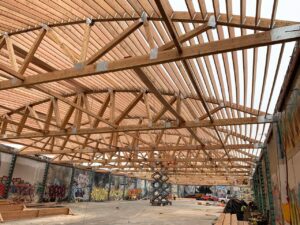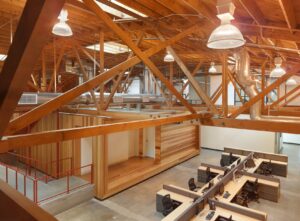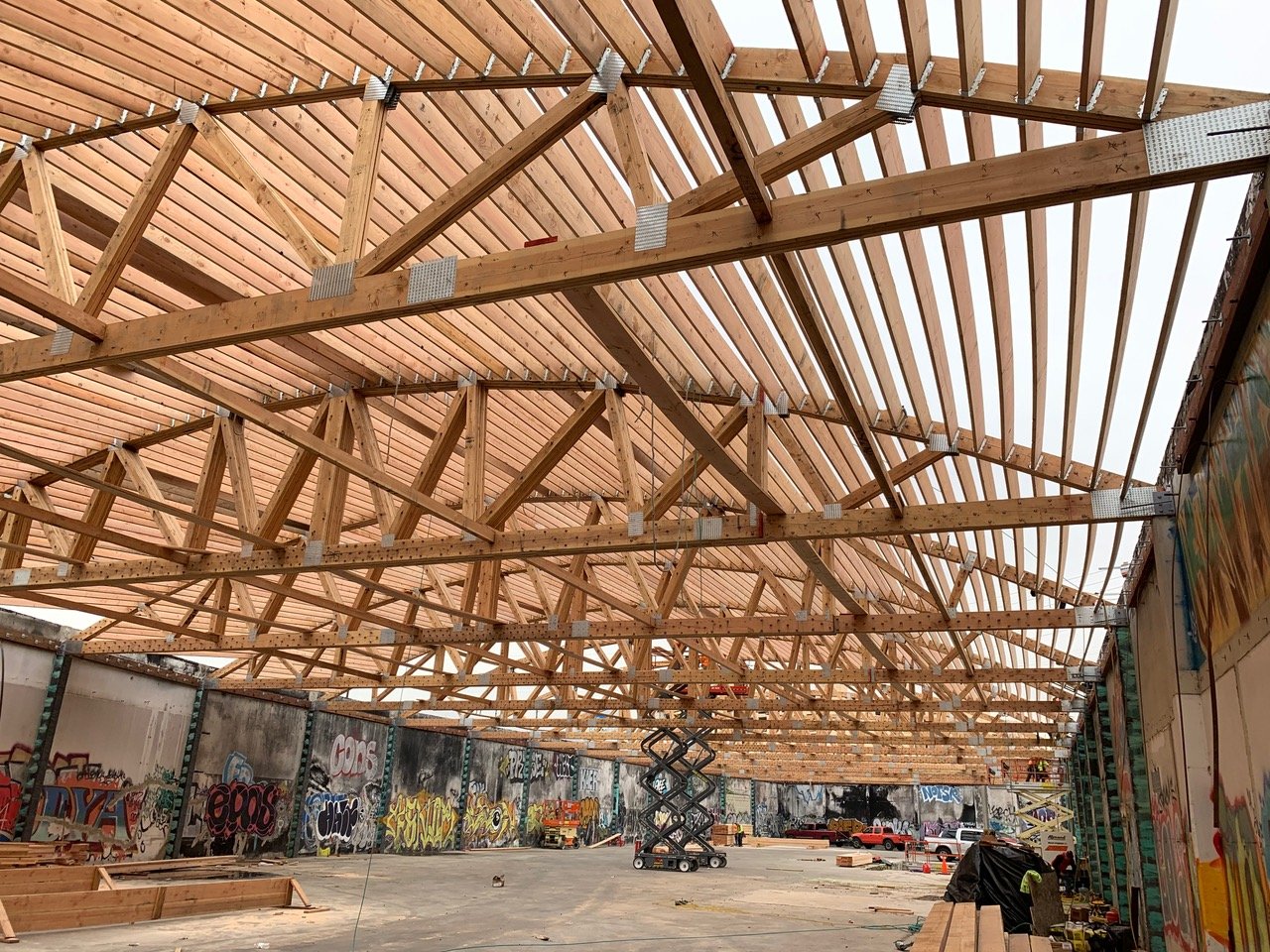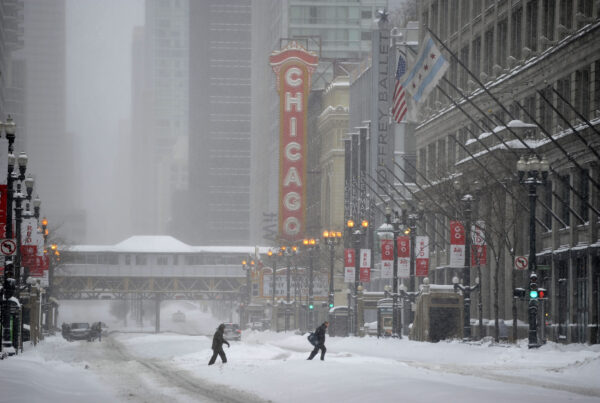

Bowstring Trusses
As a licensed design firm, we are always interested in exploring different types of trusses and their structural nature. Bowstring trusses are one type that has a unique and striking appearance, thanks to their curved top chord. These trusses were particularly popular in the late 19th and early 20th centuries for large-span buildings such as factories, warehouses, and agricultural buildings. They allowed for wide, open interior spaces that could be easily adapted to a variety of uses.
The design of bowstring trusses features a curved top chord and a straight bottom chord connected by diagonal members. This design gives the truss its distinctive bowstring shape, which is both functional and aesthetically pleasing. Bowstring trusses could be manufactured in large sections, making them easy to assemble on site. Their design also meant that they could span longer distances than other types of trusses, making them ideal for large buildings.
Today, bowstring trusses are still used in some new construction projects, but they are more commonly found in historic buildings that have been repurposed for new uses. Their unique design and historic significance make them a popular choice for architects and engineers working on preservation projects. If you’re interested in the design and history of bowstring trusses, take a look around your city or town for historic buildings that feature these distinctive trusses.
Several cities in the Chicagoland area are now requiring inspections of these structural members every 10 years. If you have bowstring trusses at your property, make sure you’re in compliance with your local authority’s building department.




